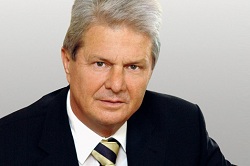 |
| Bill Gates |
The Bill & Melinda Gates Foundation joined German billionaire Dietmar Hopp in a venture syndicate that is injecting a whopping $110 million of fresh funds into CureVac, a German mRNA biotech which has now garnered some $330 million in support.
Baillie Gifford led the round, joined by the billionaires, Chartwave Limited, Coppel Family, Elma Investments (formerly Northview) and Sigma Group.
The funding comes as CureVac pursues a Phase IIb study for its lead therapeutic cancer vaccine program and sets its sights on adding a new industrial-scale manufacturing facility that can provide the product needed to get its therapies through the clinic.
This has been a big year for Tubingen, Germany-based CureVac. The biotech announced earlier this year that it is ramping up new operations in Cambridge, MA, putting the company in the center of a number of collaborative partners, says CEO Ingmar Hoerr. "Also," he adds, "there are a lot of experts available."
Indeed, CureVac relies a lot on experts on both sides of the Atlantic. The fast-growing biotech now has 240 staffers, says the CEO, with plans to keep growing.
 |
| Dietmar Hopp |
Funds have also been piling in to back the continued expansion. The Gates Foundation also came up with $54 million in funding earlier this year, striking a deal that would allow access to new therapies at a low price, while fellow tech billionaire Hopp added a $24 million investment through dievini Hopp BioTech.
CureVac has several different tech platforms in play, ranging from stimulating the immune system to an mRNA approach designed to coax cells to produce their own protein therapeutics. That same approach has inspired investors to sink close to a billion dollars into Moderna Therapeutics, which has built a broad foundation of preclinical work while CureVac has been advancing a prostate cancer vaccine toward a pivotal study.
That lead program--building on an approach using mRNA molecules that encode for specific tumor-associated antigens--produced biomarker data from 33 patients last July demonstrating that three out of every four patients experienced an immunological response to the therapeutic vaccine, triggering both CD4 and CD8 T cell responses. There was also a "trend" toward a longer survival time.
"RNA has the potential to underpin a new class of medicines and CureVac is in the vanguard," says Peter Singlehurst. "Lives will be saved by the RNA vaccines and therapies being developed by CureVac."